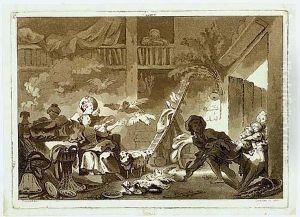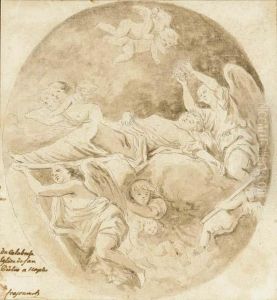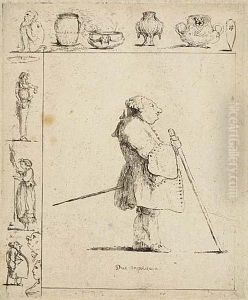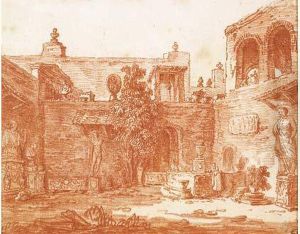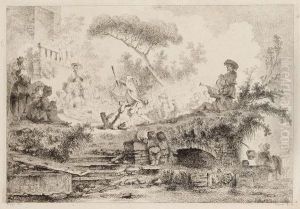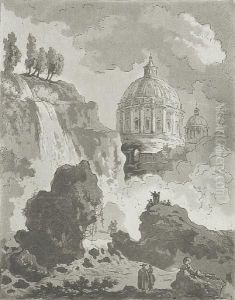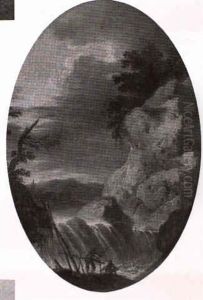Richard De Saint-Non Paintings
Jean-Claude Richard de Saint-Non, also known as the Abbé de Saint-Non, was a French artist, engraver, and man of letters born on December 12, 1727, in Paris. Though originally destined for a career in the Church – hence the title 'Abbé' – Saint-Non found his true calling in the arts and became a notable figure in the French Enlightenment.
Saint-Non came from a noble family and was well-educated, which allowed him to travel extensively. He embarked on a Grand Tour of Italy from 1759 to 1761, which proved to be a pivotal experience in his life. It was during this period that he developed a passion for art and began producing sketches and etchings. His travels in Italy also led to significant encounters with artists such as Jean-Honoré Fragonard and Hubert Robert, with whom he later collaborated.
Although not as famous as some of his contemporaries, Saint-Non made significant contributions to the world of art, particularly through his patronage and his work as an engraver and printmaker. He is perhaps best known for his 'Voyage Pittoresque,' a multi-volume collection of engravings and writings documenting the landscapes, antiquities, and notable figures of Italy. This work was influential in shaping the European view of Italy and its cultural heritage.
Saint-Non's engravings and aquatints were not just records of his travels but also disseminated the works of the artists he encountered and admired. His publications helped popularize the Italian veduta (view painting) and the picturesque aesthetic throughout Europe. Additionally, his circle included figures like Voltaire and Benjamin Franklin, indicating his active engagement with the intellectual currents of his time.
He never married and had no children, dedicating his life to art and intellectual pursuits. Saint-Non died in Paris on April 23, 1791. While he may not be widely remembered as an individual artist today, his impact as a patron, collector, and chronicler of the arts during the 18th century remains significant.
